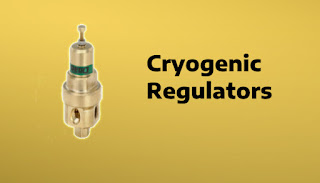CO2 Cylinders | 10 Great Tips for Safely Filling CO2 Cylinders
It is HIGHLY recommended that only trained personnel fill CO2 cylinders.
1. Perform an external inspection
2. Never fill a damaged cylinder, a cylinder with a damaged valve or a cylinder that has a valve with an altered safety relief device
3. Never fill, or “top off” a partially filled CO2 Cylinder
4. Empty all remaining contents of CO2 Cylinder
5. After moving or positioning the cylinder for emptying, allow a few minutes for any residual CO2 charge to settle before emptying.
6. Place cylinder on calibrated scale (should be able to measure weight with 3 significant digits – XX.X or X.XX, depending on size of cylinder)
7. Secure connection of filling hose to the cylinder
8. Record weight of connected empty cylinder to 3 significant digits. Add this weight to the CO2 charge marked on the crown of the cylinder.
9. Open the valve slowly and fill cylinder. This should be done slow enough to accurately monitor the weight on the scale as to not exceed the target fill weight. Once the scale has reached the target fill rate, stop the fill by closing the valve
10. With hose still connected, verify the final weight is same as target fill weight. If the cylinder has been over-filled, discharge the overfill immediately - DO NOT WAIT.
Never over fill a CO2 Cylinder. Overfilling a CO2 Cylinder, even by a small amount, can cause the safety relief device on the valve to actuate and CO2 could be discharged unexpectantly. Unexpected discharge of CO2 gas through an actuated safety relief device has been known to cause accidents, sometimes leading to personnel injury or property damage.
For more information regarding technical support documents on cylinders, please visit www.cganet.com.
Source - https://www.evergreenmidwest.com/blog/2018/02/12/10-great-tips-for-safely-filling-co2-cylinders/
1. Perform an external inspection
2. Never fill a damaged cylinder, a cylinder with a damaged valve or a cylinder that has a valve with an altered safety relief device
3. Never fill, or “top off” a partially filled CO2 Cylinder
4. Empty all remaining contents of CO2 Cylinder
- Position it properly: rotate the cylinder so the valve port is facing away from all personnel and equipment.
- If not equipped with a dip-tube, cylinder should be inverted.
5. After moving or positioning the cylinder for emptying, allow a few minutes for any residual CO2 charge to settle before emptying.
- When ready, slowly open the valve, emptying any remaining charge and other contents (moisture, contamination, corrosion, etc.) from the valve.
- When empty, close the valve
- If any content other than CO2 charge is emptied from the cylinder, including any unusual odor, do NOT refill the cylinder. This cylinder should be subjected to further inspections.
6. Place cylinder on calibrated scale (should be able to measure weight with 3 significant digits – XX.X or X.XX, depending on size of cylinder)
7. Secure connection of filling hose to the cylinder
8. Record weight of connected empty cylinder to 3 significant digits. Add this weight to the CO2 charge marked on the crown of the cylinder.
- Connected Empty Cylinder weight (3 sig. digits) + CO2 charge marked on cylinder crown = Target fill weight
9. Open the valve slowly and fill cylinder. This should be done slow enough to accurately monitor the weight on the scale as to not exceed the target fill weight. Once the scale has reached the target fill rate, stop the fill by closing the valve
10. With hose still connected, verify the final weight is same as target fill weight. If the cylinder has been over-filled, discharge the overfill immediately - DO NOT WAIT.
Never over fill a CO2 Cylinder. Overfilling a CO2 Cylinder, even by a small amount, can cause the safety relief device on the valve to actuate and CO2 could be discharged unexpectantly. Unexpected discharge of CO2 gas through an actuated safety relief device has been known to cause accidents, sometimes leading to personnel injury or property damage.
For more information regarding technical support documents on cylinders, please visit www.cganet.com.
Source - https://www.evergreenmidwest.com/blog/2018/02/12/10-great-tips-for-safely-filling-co2-cylinders/





